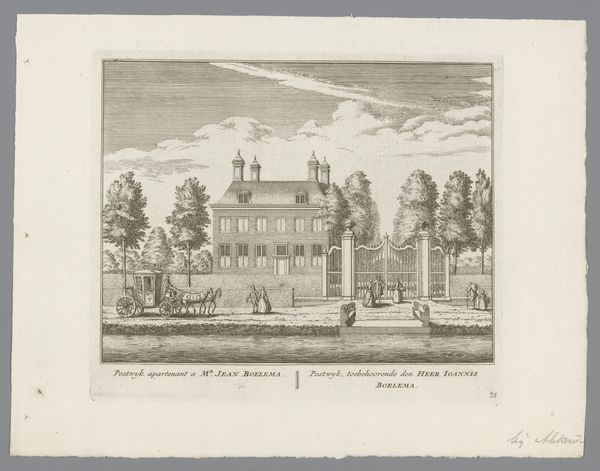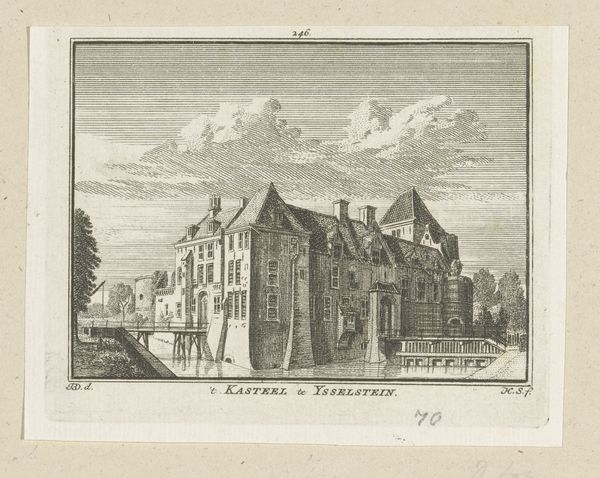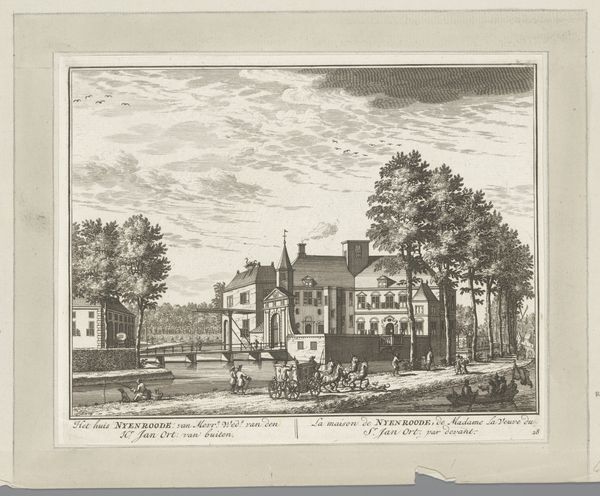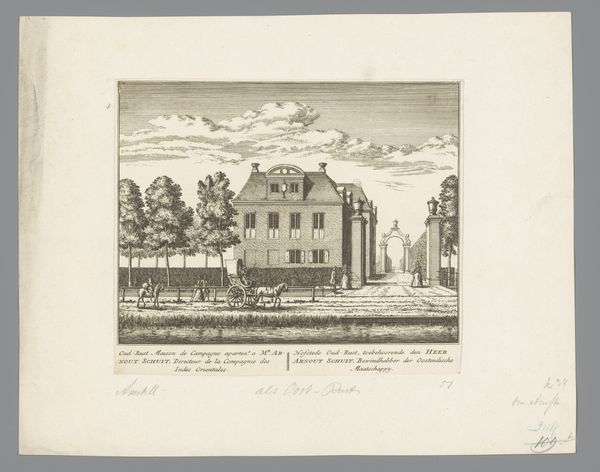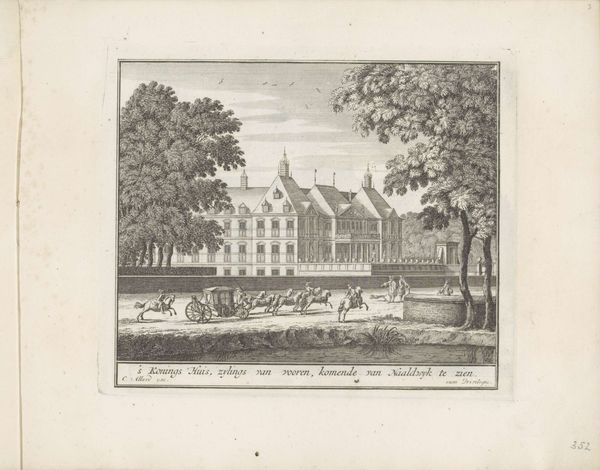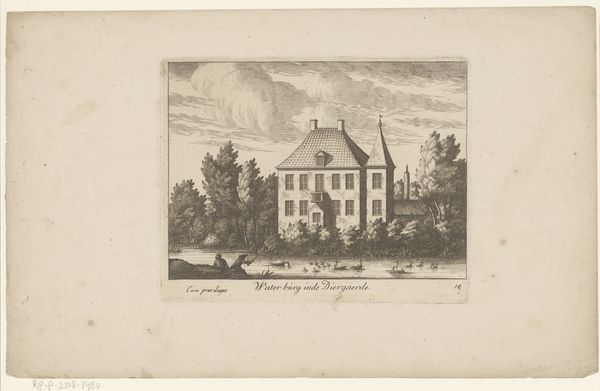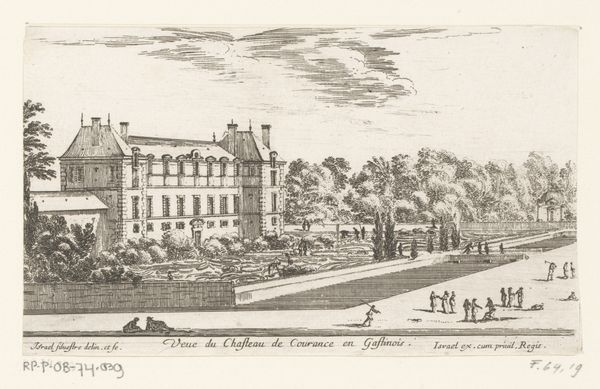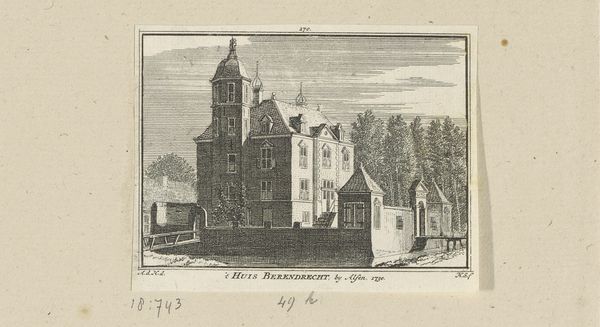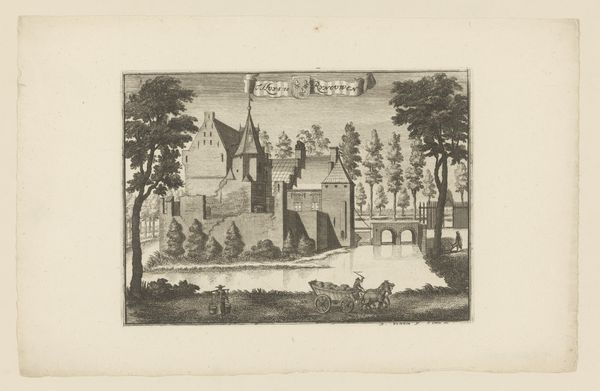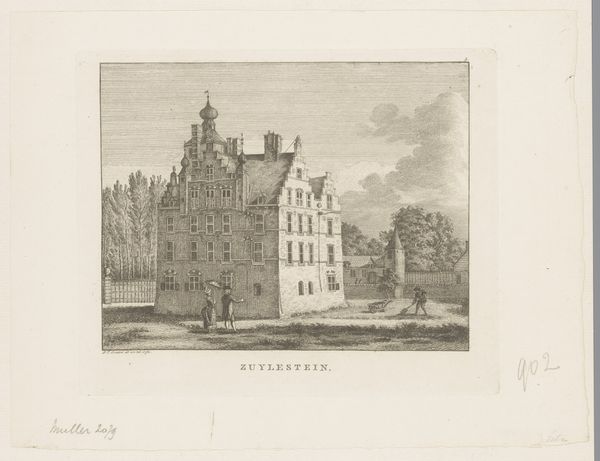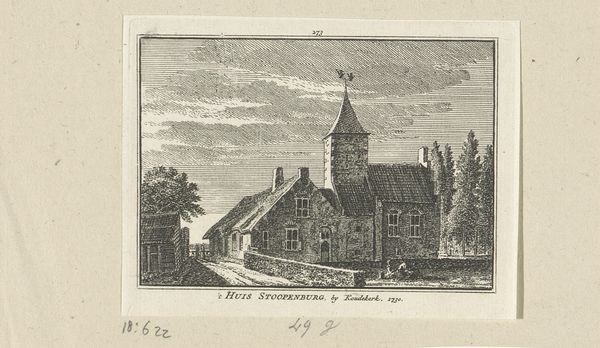
Dimensions: height 81 mm, width 109 mm
Copyright: Rijks Museum: Open Domain
Curator: This image has such precise linework, almost like an architect’s blueprint. Editor: Yes, it gives off a strong sense of order and control, doesn't it? Everything is so neatly defined. Let me introduce what we are seeing. This is a work by Hendrik Spilman titled "Gezicht op Huis Oud-Alkemade," dating from approximately 1750 to 1792. It’s an engraving on paper, currently held at the Rijksmuseum. Curator: The composition really emphasizes the grandeur of the building, but it also feels quite rigid, almost…oppressive. Who were the people who lived here and how did it affect their life, this imposed lifestyle of a grand home? Editor: As a materialist, I'm curious about the means of production of such prints during that time. How many hands were involved in creating these lines? And what sort of labor conditions made possible that level of details? Was Spilman simply commissioned to portray wealth and privilege, or was there more? Curator: Absolutely. Thinking about the historical context, we must recognize the power dynamics embedded in the Dutch Golden Age. What's reflected and, indeed, sanctioned by this image. Was this an ethical expression? Editor: Perhaps we are idealizing "organic" craft. Maybe these people were making "organic" money via "inorganic" activities such as colonialism. Yet I think that Spilman's work acts more like a documentary of its period than endorsement. Curator: I think that by questioning that seemingly objective portrayal of that time, we bring a more nuanced and critical interpretation, challenging any sense of historical nostalgia that the image might evoke on its own. Who benefitted and who paid the price for it? Editor: I see what you are driving at. Even a seemingly simple architectural rendering becomes charged when examined through that lens. And understanding the conditions of its creation – both technical and societal – further complicates our reading of it. Curator: Exactly, seeing beyond surface representations to consider what these places, objects, images truly represent and whose stories were forgotten and excluded from this visual landscape. Editor: Yes, every drawing, painting and house, however simple, echoes within its context the economic engine and historical fingerprint that brought it to light.
Comments
No comments
Be the first to comment and join the conversation on the ultimate creative platform.

